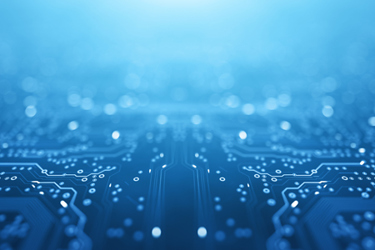The Evolving Landscape Of Smart Water Meters
By Christian Bonawandt

Although advanced metering infrastructure (AMI) technology has been around for some time, it is still on the upswing in terms of adoption and performance.
The digital water market has undergone a remarkable transformation in recent years, with smart metering emerging as a cornerstone. Eric Bindler, senior research director for Bluefield Research, recently spoke with Water Online about major changes taking place in the world of smart meters. Drawing from a recent research report, The Global Water Metering Landscape1, Bindler stated, “Metering constitutes a substantial portion, around 40%, of the global market for digital water.” This fact underlines the pivotal role smart meters play in the collection, management, and analysis of data, providing utilities with valuable insights into customers’ behaviors and broader network conditions. The report indicates that global digital water spend will scale at a 7.8% compound annual growth rate (CAGR) from $26 billion in 2021 to $55 billion in 2030, amounting to $387 billion over 10 years. This growth will be fueled by a combination of technical advances and a shift in manufacturers’ business strategies.
Expanding Meter Capabilities
Smart water meters are seeing a greater need for precision in order to meet the efficiency and sustainability goals of water utilities. Bindler explained, “The biggest trend we see is the move toward solid-state meters, whether electromagnetic or ultrasonic. These meters, devoid of moving parts, offer heightened accuracy, reliability, and durability over time, significantly reducing maintenance costs.”
Moreover, Bindler highlighted innovative trends in hardware, such as the integration of additional sensors within residential meters. “Embedding pressure sensors, temperature sensors, or even acoustic leak detection capabilities within meters is gaining traction,” he added. “This enhances the meters’ functionality and provides utilities with a more comprehensive understanding of network conditions.”
Data Demand Drives Software Developments
Metering-related software alone is expected to grow at 12.7% annually. A major driver is the focus beyond traditional billing toward proactive customer engagement. Bindler elaborated, “Smart meter data can be leveraged to build more proactive relationships with customers. Utilities can analyze individual water usage, identify potential leaks, and provide customers with personalized tips to reduce their water footprint.”
This shift toward customer-centric approaches is accompanied by the development of sophisticated customer portals. Meter vendors are increasingly investing in customer-facing portals, offering users a comprehensive view of their water consumption. These portals offer value-added services and empower customers to make informed decisions about their water usage.
Moreover, the integration of meter data into broader distribution network management is gaining prominence. “Meter data can contribute significantly to leak detection, water quality management, and overall network understanding. This holistic approach allows utilities to manage their networks more efficiently,” Bindler noted.
Innovation Through Acquisitions
The smart water meter market has experienced a significant reshaping due to mergers and acquisitions, with several industry players strategically joining forces. For example, over the past few years, Badger Meter broadened its portfolio to include water quality monitoring technology from Analytical Technology, Inc., as well as pressure monitoring through Syrinix. These acquisitions signify a broader vision by many smart meter suppliers to offer comprehensive solutions rather than focusing solely on traditional metering.
Such mergers and acquisitions are not merely business transactions; they are part of a collective push toward innovation and comprehensive solutions. “Companies are not just acquiring for the sake of growth but are strategically integrating new technologies, data analytics, and management capabilities into their portfolios, enhancing the value proposition for utilities,” said Bindler.
Communication Diversity
Metering connectivity spending is expected to experience an 11.9% growth rate through 2030, according to the report. Much of this growth is fueled by growing options for communications technologies. While radio-frequency-based communications technology remains both relevant and highly effective, adoption of cellular-based metering is on the rise and poised to continue growing. Cellular technologies, such as NB-IoT, eliminate the need for dedicated infrastructure and have the potential to be cost-effective and scalable solutions.
However, Bindler noted that the landscape is diversifying with emerging technologies like Amazon Sidewalk, which uses existing Alexa and Ring devices and communication meter and other data. In addition, low-power wide-area networks (LPWAN) such as Long Range (LoRa) and Sigfox also provide utilities with alternatives, each with its own set of trade-offs, including signal penetration and dependency on external providers. “The industry is navigating a landscape of choices, considering factors such as cost, coverage, and signal strength,” noted Bindler.
Supply Chain Vulnerabilities
It won’t all be smooth sailing, according to Bindler. The COVID- 19 pandemic and more recent semiconductor shortages highlighted supply chain vulnerabilities within the smart meter industry. Manufacturers often rely on third-party suppliers for batteries, chips, and other critical components. Supply chain shortages affect the production capabilities of certain companies. For the most part, however, manufacturers have not extensively explored proprietary battery or other component solutions.
The recent Infrastructure Investment and Jobs Act (IIJA) includes provisions like the Build America Buy America Act (BABAA) that encourages domestic sourcing. While this has the potential to reduce vulnerabilities by bringing more manufacturing capabilities into the U.S. or nearby regions, it can also limit supply chain diversity, creating or exacerbating future constraints.
References:
Christian Bonawandt is an industrial content writer for Water Online. He has been writing about B2B technology and industrial processes for 23 years.
